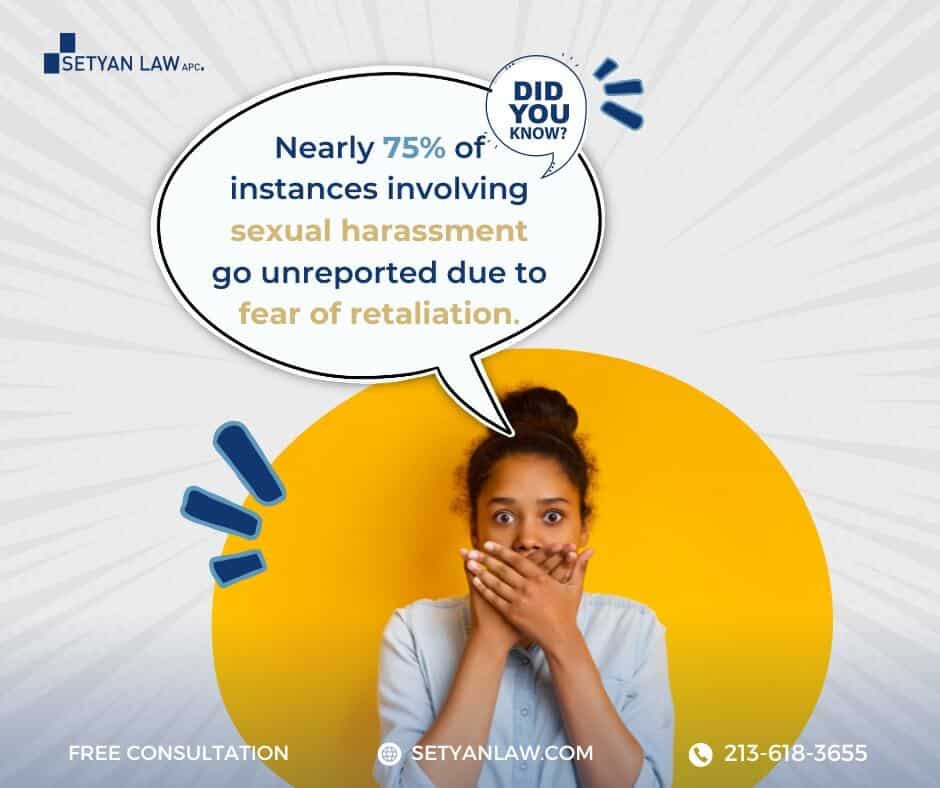Updated August 23, 2025
Sexual Harassment in the Restaurant Industry: A Growing Concern
The restaurant industry has long grappled with a pervasive and deeply concerning problem: sexual harassment. This issue affects workers across all levels, from servers and kitchen staff to management. While recent years have seen increased attention on workplace harassment in various sectors, the food service industry continues to face significant challenges in addressing and preventing such behavior. This comprehensive article delves into the root causes, alarming statistics, and far-reaching consequences of sexual harassment in restaurants, while also exploring potential solutions and best practices for creating safer work environments.
The Scope of the Problem: Alarming Statistics
The prevalence of sexual harassment in the restaurant industry is staggering. Multiple studies and reports have consistently shown that food service workers face disproportionately high rates of harassment compared to other sectors. Let’s examine some of the most troubling statistics:
More sexual harassment claims in the U.S. are filed in the restaurant industry than in any other, where as many as 90% of women and 70% of men reportedly experience some form of sexual harassment.
Frequency of Harassment Claims
The U.S. Equal Employment Opportunity Commission (EEOC) reports that the accommodation and food services sector accounts for the highest percentage of sexual harassment claims filed across all industries. This sobering fact underscores the urgent need for systemic change within the restaurant world.
Gender Disparities in Harassment Experiences
Research indicates a significant gender gap in harassment experiences:
- Women in the restaurant industry report experiencing sexual harassment at alarmingly high rates, with some studies suggesting that up to 90% of female workers have encountered such behavior.
- While less prevalent, male restaurant workers are not immune to harassment, with approximately 70% reporting some form of sexually inappropriate conduct in the workplace.
Frequency of Incidents
For many restaurant workers, particularly women, harassment is not an isolated incident but a recurring problem:
- More than half of female restaurant employees who have faced harassment report experiencing it on a weekly basis.
- This constant exposure to inappropriate behavior can have severe psychological and professional consequences for victims.
Underreporting and Hidden Statistics
It’s crucial to note that these statistics likely underestimate the true extent of the problem. Many incidents go unreported due to fear of retaliation, lack of faith in reporting systems, or concerns about job security. The actual prevalence of sexual harassment in restaurants may be even higher than current data suggests.
Root Causes: Understanding the Factors Behind Restaurant Industry Harassment
To effectively address sexual harassment in restaurants, it’s essential to examine the underlying factors that contribute to its prevalence. Several interrelated issues create an environment where harassment can thrive:
The Tipping Culture and Customer Satisfaction Model
One of the primary drivers of sexual harassment in restaurants is the deeply ingrained tipping culture and emphasis on customer satisfaction:
- Many food service workers, especially servers, rely heavily on tips to supplement their often subminimum wages.
- This financial dependence can create a power imbalance, where workers feel pressured to tolerate inappropriate behavior from customers to secure better tips.
- The “customer is always right” mentality can lead management to prioritize patron satisfaction over employee well-being, potentially turning a blind eye to harassment from customers.
Power Dynamics and Workplace Hierarchy
The structure of many restaurants can exacerbate harassment issues:
- Service workers, who are often women, immigrants, transplants, or members of other marginalized groups, may feel vulnerable to exploitation by those in positions of authority.
- The fear of retaliation or job loss can prevent victims from reporting harassment, particularly when perpetrators are managers or influential customers.
High Employee Turnover Rates
The restaurant industry is known for its high turnover rates, which can inadvertently contribute to a culture where harassment goes unchecked:
- Short-term or seasonal employees may be less likely to report harassment, choosing instead to endure it until they leave.
- Frequent staff changes can make it challenging to establish and maintain a consistent workplace culture that prioritizes respect and professionalism.
Sexualized Uniforms and Appearance-Based Marketing
Some restaurants employ marketing strategies that objectify their staff:
- Requiring employees to wear revealing or sexualized uniforms can send the message that their appearance is a commodity.
- When physical appearance is emphasized as part of the dining experience, it can blur the lines between professional service and personal boundaries.
The Many Faces of Sexual Harassment in Restaurants
Sexual harassment in the restaurant industry can take various forms, ranging from subtle inappropriate comments to overt physical advances. Understanding these different manifestations is crucial for identifying and addressing problematic behavior:
Verbal Harassment
Verbal forms of sexual harassment are unfortunately common in restaurant settings:
- Unwelcome sexual jokes, comments, or innuendos
- Inappropriate remarks about an employee’s body or appearance
- Persistent requests for dates or sexual favors
- Sexually explicit or offensive language
Physical Harassment
Physical harassment involves unwanted touching or invasion of personal space:
- Groping, fondling, or other non-consensual physical contact
- Blocking someone’s path or cornering them in a confined space
- Unwanted hugs, kisses, or other forms of physical affection
Visual Harassment
Visual harassment includes non-verbal cues and actions of a sexual nature:
- Leering or staring in a sexually suggestive manner
- Displaying or sharing sexually explicit images or videos
- Making obscene gestures or facial expressions
Quid Pro Quo Harassment
This type of harassment involves leveraging power or authority for sexual favors:
- Offering promotions, better shifts, or other job benefits in exchange for sexual acts
- Threatening negative consequences (e.g., termination, reduced hours) for refusing sexual advances
Customer-Initiated Harassment
While often overlooked, harassment from patrons is a significant issue:
- Inappropriate touching or groping of servers
- Making sexually charged comments or propositions
- Leaving sexually explicit notes or messages
Digital Harassment
With the increasing use of technology in restaurants, digital forms of harassment have emerged:
- Sending unwanted sexually explicit texts or messages to coworkers
- Sharing inappropriate content through workplace communication platforms
- Cyberstalking or online harassment of colleagues
The Far-Reaching Consequences of Restaurant Industry Harassment
The impact of sexual harassment in restaurants extends far beyond the immediate incident, affecting individuals, businesses, and the industry as a whole:
Psychological and Emotional Toll on Victims
Experiencing sexual harassment can have profound psychological effects:
- Increased risk of anxiety, depression, and post-traumatic stress disorder (PTSD)
- Lowered self-esteem and feelings of powerlessness
- Difficulty trusting others and forming healthy workplace relationships
Professional and Financial Repercussions
Harassment can significantly impact a victim’s career trajectory and financial stability:
- Reduced job satisfaction and decreased productivity
- Missed opportunities for advancement due to avoiding certain situations or individuals
- Potential loss of income if forced to leave a job or reduce hours
Health and Well-being Concerns
The stress of dealing with harassment can manifest in physical health issues:
- Sleep disturbances and fatigue
- Increased risk of substance abuse as a coping mechanism
- Psychosomatic symptoms such as headaches, gastrointestinal problems, or chronic pain
Impact on Workplace Culture and Morale
Sexual harassment affects not only the direct victims but the entire work environment:
- Creation of a hostile workplace atmosphere
- Decreased trust and cooperation among team members
- Potential for increased conflict and tension between staff
Business and Industry Consequences
Restaurants that fail to address sexual harassment face serious risks:
- Damage to reputation and loss of customer trust
- Increased employee turnover and associated costs
- Potential legal liabilities and financial penalties
Broader Societal Implications
The prevalence of harassment in restaurants can have wider societal effects:
- Perpetuation of harmful gender stereotypes and power imbalances
- Discouragement of talented individuals from entering or staying in the industry
- Normalization of inappropriate behavior in other social contexts
Legal Framework: Understanding Employee Rights and Employer Obligations
Navigating the legal landscape surrounding sexual harassment in restaurants is crucial for both employees and employers. Understanding rights, responsibilities, and available protections can empower victims and encourage proactive prevention:
Federal Laws and Protections
Several federal laws address workplace sexual harassment:
- Title VII of the Civil Rights Act of 1964 prohibits discrimination based on sex, including sexual harassment, in workplaces with 15 or more employees.
- The Equal Pay Act of 1963 mandates equal pay for equal work, regardless of gender, helping to address power imbalances that can contribute to harassment.
State and Local Regulations
Many states and municipalities have enacted additional protections:
- Some jurisdictions have lowered the employee threshold for sexual harassment laws to apply, covering smaller restaurants.
- Certain states require mandatory sexual harassment training for all employees, not just management.
Employee Rights
Restaurant workers have specific rights regarding sexual harassment:
- The right to a workplace free from sexual harassment and discrimination
- The right to report harassment without fear of retaliation
- The right to have complaints taken seriously and investigated promptly
Employer Responsibilities
Restaurant owners and managers have legal obligations to prevent and address sexual harassment:
- Developing and implementing clear anti-harassment policies
- Providing regular training on sexual harassment prevention
- Establishing accessible and confidential reporting mechanisms
- Conducting thorough investigations of all harassment complaints
- Taking appropriate corrective action when harassment is substantiated
Legal Recourse for Victims
Employees who experience sexual harassment have several options for seeking justice:
- Filing a complaint with the EEOC or state/local fair employment agencies
- Pursuing internal grievance procedures within their workplace
- Consulting with an employment law attorney to explore potential legal action
Best Practices for Preventing Sexual Harassment in Restaurants
Creating a harassment-free work environment requires a multifaceted approach. Here are some best practices that restaurants can implement to prevent and address sexual harassment:
Develop Comprehensive Policies
Establish clear, written policies that:
- Define sexual harassment and provide concrete examples
- Outline reporting procedures and investigation processes
- Specify consequences for policy violations
- Emphasize the prohibition of retaliation against those who report harassment
Provide Regular Training
Implement ongoing education programs:
- Conduct mandatory sexual harassment prevention training for all employees, not just management
- Include bystander intervention techniques to empower staff to speak up
- Tailor training content to address industry-specific scenarios and challenges
Foster an Open Communication Culture
Create an environment where employees feel safe discussing concerns:
- Encourage open dialogue about workplace respect and professionalism
- Establish multiple channels for reporting harassment, including anonymous options
- Regularly solicit feedback from staff on workplace climate and safety
Empower Management to Address Customer Harassment
Equip managers with tools to protect staff from patron-initiated harassment:
- Develop protocols for intervening when customers behave inappropriately
- Empower managers to remove or ban patrons who engage in harassment
- Prioritize employee safety over customer satisfaction when necessary
Implement Fair Scheduling and Wage Practices
Address systemic issues that can contribute to vulnerability:
- Ensure fair distribution of shifts and sections to reduce favoritism
- Work towards providing living wages to reduce reliance on tips
- Consider alternative compensation models that don’t place the burden of income on customer generosity
Conduct Regular Policy Reviews and Updates
Keep harassment prevention efforts current and effective:
- Regularly review and update policies to reflect changing laws and best practices
- Solicit employee input on policy effectiveness and areas for improvement
- Stay informed about industry trends and emerging issues related to workplace harassment
The Role of Bystanders: Empowering Staff to Intervene
Creating a culture of respect and safety in restaurants requires the active participation of all staff members. Bystander intervention can play a crucial role in preventing and addressing sexual harassment:
Recognizing the Importance of Bystander Action
Understanding why bystander intervention matters:
- Immediate support for victims can mitigate the harmful effects of harassment
- Collective action sends a clear message that harassment is not tolerated
- Intervention can prevent escalation and create a safer work environment for everyone
Training Staff in Intervention Techniques
Equipping employees with the skills to intervene effectively:
- Teaching the “5 Ds” of bystander intervention: Direct, Distract, Delegate, Delay, and Document
- Providing role-playing scenarios to practice intervention strategies
- Addressing common barriers to intervention, such as fear of retaliation
Creating a Supportive Environment for Intervention
Fostering a workplace culture that encourages and rewards intervention:
- Establishing clear policies that protect employees who intervene from retaliation
- Recognizing and praising staff members who take action to prevent harassment
- Incorporating bystander intervention into performance evaluations and promotions
Addressing Customer-Initiated Harassment
Empowering staff to handle difficult situations with patrons:
- Developing specific protocols for addressing customer harassment
- Training employees on de-escalation techniques
- Ensuring management support for staff who intervene in customer situations
The Path Forward: Industry-Wide Initiatives and Systemic Change
Addressing sexual harassment in the restaurant industry requires collective action and systemic reforms. Here are some industry-wide initiatives and changes that could help create safer, more equitable workplaces:
Industry Coalitions and Partnerships
Forming alliances to tackle harassment on a broader scale:
- Creating industry-wide task forces to develop best practices and share resources
- Partnering with advocacy groups and labor organizations to amplify worker voices
- Collaborating with educational institutions to integrate harassment prevention into culinary and hospitality programs
Certification Programs and Industry Standards
Establishing recognized benchmarks for workplace safety:
- Developing industry-specific certification programs for harassment-free workplaces
- Creating a “seal of approval” for restaurants that meet high standards of employee protection
- Incorporating harassment prevention metrics into restaurant rating systems and reviews
Technology Solutions
Leveraging technology to support harassment prevention efforts:
- Developing apps or platforms for anonymous reporting and tracking of incidents
- Using data analytics to identify patterns and risk factors for harassment
- Implementing AI-powered training programs that can adapt to individual learning needs
Legislative and Policy Advocacy
Pushing for legal reforms to strengthen protections:
- Advocating for stronger anti-harassment laws and enforcement mechanisms
- Supporting initiatives to eliminate the tipped minimum wage and reduce financial vulnerability
- Promoting policies that require transparency in reporting and addressing harassment incidents
Changing Industry Culture
Addressing deep-rooted issues that contribute to harassment:
- Challenging the normalization of inappropriate behavior in restaurant settings
- Promoting diversity and inclusion at all levels of the industry, especially in leadership roles
- Redefining notions of hospitality to prioritize employee well-being alongside customer satisfaction
Conclusion: A Call to Action for a Safer Restaurant Industry
Sexual harassment in the restaurant industry is a complex and deeply entrenched problem, but it is not insurmountable. By understanding the root causes, implementing comprehensive prevention strategies, and working collectively towards systemic change, we can create a safer, more equitable environment for all restaurant workers.
The path forward requires commitment and action from all stakeholders – restaurant owners, managers, employees, customers, and industry leaders. It demands a shift in culture, a reevaluation of priorities, and a willingness to challenge long-standing norms and practices.
As we move towards a more inclusive and respectful restaurant industry, let us remember that every individual has a role to play in this transformation. Whether you’re a restaurant owner implementing new policies, a manager intervening in a harassment situation, or a customer speaking up against inappropriate behavior, your actions matter.
By working together, we can build a restaurant industry where all employees feel safe, valued, and empowered to thrive in their careers. The time for change is now – let’s create a future where sexual harassment in restaurants is a thing of the past, and where the hospitality industry truly lives up to its name by fostering environments of genuine respect and care for all.
Have you been a victim of Sexual Harassment? Our Los Angeles employment lawyer Sam Setyan and his legal team of experts will provide you the quality legal services required to win your case, and bring you justice. Sam Setyan will review your grievance, tell you your options, and guide you to the most favorable outcome possible. Call today 213-618-3655, it’s free and there’s no fee till you win.






